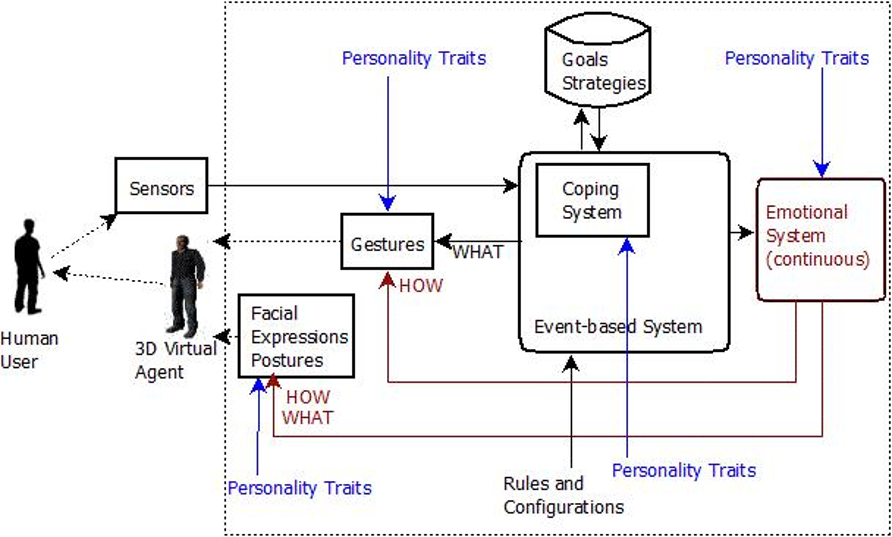Architecture for Personality-based Nonverbal Behavior

As humans we perceive other humans as individually different based on a consistent pattern of affect, cognition, and behavior. Here we propose a biologically and psychologically grounded cognitive architecture for the control of nonverbal behavior of a virtual humanoid character during dynamic interactions with human users. Key aspects of the internal states and overt behavior of the virtual character are modulated by high-level personality parameters derived from the scientific literature. The virtual character should behave naturally and consistently while responding dynamically to the environment's feedback. Our architecture produces a consistent patterns of behavior though personality traits that have a modulatory influence at different levels of the hierarchy. These factors affect on the one hand high-level components such as emotional reactions and coping behavior, and on the other hand low-level parameters such as the speed of movements and repetition of gestures. Psychological data models are used as a reference to create a map between personality factors and patterns of behavior. We present a novel hybrid computational model that combines the control of discrete behavior of the virtual character moving through states of the interaction with continuous updates of the emotional state of the virtual character depending on feedback from interactions with the environment. The model is evaluated in a turn-taking interaction between a participant and a virtual human, where the two agents play rock-paper-scissors with each other.
References
An Architecture for Personality-based, Nonverbal Behavior in Affective Virtual Humanoid Character. Maryam Saberi, Ulysses Bernardet, and Steve DiPaola. Procedia Computer Science, 41:204--211, 2014. [ bib ]Model of Personality-Based, Nonverbal Behavior in Affective Virtual Humanoid Character. Maryam Saberi, Ulysses Bernardet, and Steve DiPaola. In Proceedings of the 2015 ACM on International Conference on Multimodal Interaction, ICMI '15, pages 371--372, New York, NY, USA, 2015. ACM. [ bib | DOI | http ]
